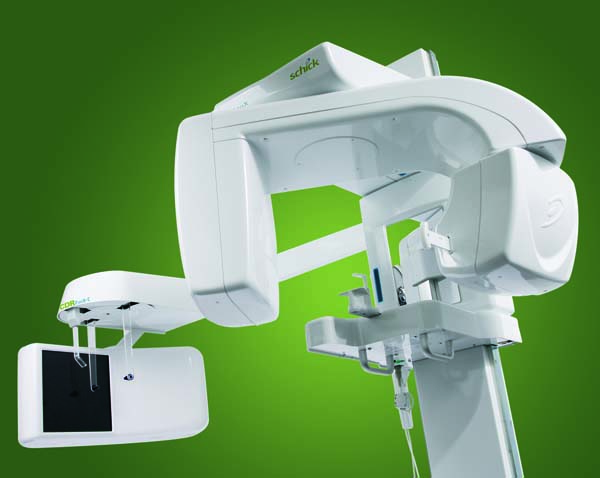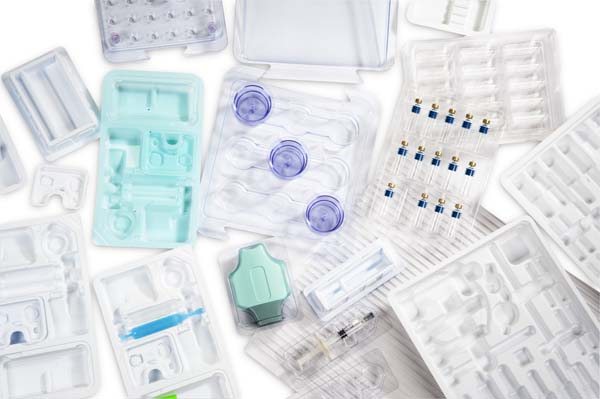Universal Plastics (formerly Mayfield Plastics) Featured For Medical Thermoforming Expertise – The following article appeared in the February 2015 Issue of D2P Magazine.
Click here for the full article from D2P Magazine

The O-arm Surgical Imaging System from Medtronic is a multi-dimensional, surgical imaging platform that’s designed for use in spine, orthopedic, and trauma-related surgeries. Universal Plastics manufactured plastic components for the O-ring, as well as the interface between the O-ring and the main cabinet.
Photo courtesy of Medtronic/Universal Plastics.
Highly cosmetic, pressure-formed parts that meet strict quality and functional requirements within tight timelines are a specialty of a Massachusetts thermoformer, which often teams up with its sister company to solve customers’ engineering quandaries.
Experience, an attribute that medical device OEMs value highly in their suppliers, is something that Universal Plastics offers in abundance. Universal, an ISO 9001:2008 registered manufacturer of custom thermoformed parts, has been active in the medical device thermoforming space for over 40 years. During that span, the company has partnered with medical device customers to design and manufacture parts used in everything from medical lasers to X-ray equipment, bone density scanners, CT scan machines, and MRI machines. Other applications have included medical carts, dental equipment, and custom medical device packaging, such as clamshell containers for patients’ belongings, first aid kits, and syringe trays.
Since 2006, the company has been operating a 60,000-square-foot facility in Sutton, Massachusetts, where it works with major medical OEMs to make a variety of housings, bezels, enclosures, panels, and medical packaging, as well as medical trays and material handling products, among numerous others. With the coming together of Universal Plastics and its sister company — Holyoke, Massachusetts-based Universal Plastics — under the single ownership of Jay Kumar in 2013, Universal’s customers now have access to the full resources of both custom thermoforming companies. Universal Plastics, known for its in-house design capabilities, offers multiple in-house services in addition to thermoforming, including painting, EMI/RFI shielding, and assembly
“Dual site capabilities allow us to meet all of our customers’ needs, provide excellent customer service, and guarantee exceptional quality,” said Pia Kumar, Universal’s director of corporate development, in an e-mailed response.
Universal’s custom thermoforming processes — thin and heavy gauge forming, vacuum forming, pressure forming, and twin-sheet forming — are able to convert a sheet of plastic into a highly detailed finished product with considerably less tooling investment than other plastic molding processes, such as injection molding.
“As a supplier to OEMs, Universal Plastics’ biggest strength is our proven track record in high quality, custom, complex medical device product manufacturing,” said Ms. Kumar. “Universal Plastics offers an extensive resume in medical device parts manufacturing, and our expertise lies in manufacturing a custom product suited to the customer’s specific performance or functional need.
“Our medical device customers are looking to us to design and/or manufacture a highly cosmetic part that meets exacting quality and functional requirements,” she continued. “The look and feel is highly specific to the branding and image the customer is looking to portray because usually, the parts we are manufacturing are highly visible and critical to the aesthetic look of the overall medical device.”
Paul Davidson, sales engineer for Universal Plastics, said that when bringing a medical product to market, medical industry OEMs typically express concerns over two main issues: the aesthetic appeal and cosmetic aspects of the product, and the need for rapid turnaround.
“Typically, we’re seeing products that have been in development for a while, and now they’re finally just getting around to doing the exterior, the housing pieces,” he said in an interview. “So we end up being the one that has to hustle along trying to bring the project to completion. And, of course, a lot of these medical devices are pretty sophisticated and sell for a pretty high price point. So, to go hand-in-hand with that, they’re usually looking for a very modern, very high cosmetic level, with good aesthetics and a good design concept behind it.”

Universal Plastics, manufactured parts for the Schick CDR PanX-C2, a dental imaging system by Sirona.
Photo courtesy of Sirona/Universal Plastics.
The thermoforming process that’s most likely to be chosen for Universal’s medical equipment projects is pressure forming, a process tailor-made for highly cosmetic parts. Pressure forming enables much sharper detail to be achieved on thermoformed parts by increasing the forming pressure well beyond that which is used in traditional vacuum forming.
“Pressure forming allows you to form the parts into a female mold, and the mold can actually be textured, just like an injection mold would, so you can emboss the texture into the part during the forming process,” said Davidson. “It allows you to form tight corners and do some modern design features, like ribs and style lines, which seem to be in vogue these days.”
Kumar said that Universal Plastics offers all the services that its medical device customers need, from product conception to market launch. The company’s in-house design engineers offer complete product design support and can partner with the OEM customer to design the part. Its in-house tooling department provides control over the entire process, allowing Universal to provide speed to market and guarantee the tight timelines that are so important to medical device OEM customers.
On the manufacturing front, Universal provides a variety of services—from secondary operations to accepting blanket orders that allow for KanBan type stocking programs for Just in Time deliveries—that enable the company to operate as a turnkey, single-source contract manufacturing partner. The company operates 3-axis and 5-axis CNC equipment for precise trimming of formed parts, and its roster of secondary services includes complex assembly, as well as in-house finish painting, RFI/EMI shielding, custom packaging, exact color matching, and drape forming. And consistent with its ISO certification, Universal has a rigorous Quality Control department that employs a CMM to verify tooling against 3-dimensional models before releasing the tooling for production. After production, parts are inspected for conformance to quality standards.
“When a new customer comes to us, they want to know that they are working with a company with experience, a company that understands the highly cosmetic and functionally exacting requirements of this market,” said Kumar. “Along with Universal’s track record of successfully working with major medical device OEMs, our in-house engineering, design services and tooling are important differentiators for customers. Because Universal Plastics is able to provide comprehensive, end-to-end manufacturing services, customers are guaranteed that consistency of quality and that control on every element of the process will remain with them.”
Like Kumar, Davidson credits Universal’s in-house design, engineering, and toolmaking expertise as a differentiator that enables the company to specialize in the type of complex, custom products required by its medical device customers. Toolmakers on staff bring more than 100 years of cumulative experience to their work. And by combining its engineering staff with that of Universal Plastics, its Holyoke, Mass.-based sister company, Universal offers the mechanical and manufacturing engineering talents of six engineers.
“What you find these days is that a lot of companies are running lean and mean, and they don’t have the expertise in the thermoforming business to know how to properly develop parts for thermoforming,” Davidson said. “Also, they just don’t have the staff necessary to devote the manpower to getting designs done themselves. So being able to just bring in a concept, or bring in some kind of an overview of what they’re looking to do, and then hand it off to our crew to finish up the design and come up with a detailed product, is pretty important.”
The company’s full-service, in-house design services include more than design assistance. Clients might come to Universal with a framework that they’re looking to have covered, Davidson said, or with a napkin sketch that needs to be developed into a thermoformable part that requires the creation of mounting points and cut-outs.

A variety of thin-gauge medical packaging trays produced by Universal Plastics.
Photo courtesy of Universal Plastics.
“We can actually take the customer’s concept and do a design concept from that, and then develop it into a 3D CAD model,” he said. “And we can send them the CAD model so they can do a test up with their equipment before we finalize the design. So, as far as thermoforming goes, it’s a full-service design house, actually, right in house.”
A major medical equipment OEM customer recently approached Universal with a design concept for a new housing assembly for a new product. Operating on a limited budget, the customer was looking to achieve a very specific overall appearance for the unit, which needed to be a highly cosmetic, complex, multi-piece assembly with many accessory components. Working together with the customer, Universal was able to develop and execute on an approach that met all of the exacting design and cosmetic requirements while still coming in on budget and on time.
“Our in-house sales engineers and designers partnered with their designers to develop a solution consisting of a combination of pressure formed panels, with a texture painted finish, [and] several access panels fabricated from smoked acrylic,” said Kumar. “This included a large main acrylic panel with several bends that needed to be precisely fabricated to match the contours of the mating, pressure formed end panels.” Ultimately, Kumar said, Universal provided its customer with a turnkey solution within the timeline of their new product launch.
Ellen Sora, an account executive with Universal, said that the company is able to provide what medical device OEM customers value most in a supplier—“years of experience, the knowledge, the engineering background, and a well-known history of making parts similar to what they’re looking for,” she said.
Davidson agreed, adding that “they’re looking for you to be cost competitive—not necessarily the lowest cost, but it’s a combination of cost competitiveness, experience, reliability, and capability, and I think we offer a very good balance with those items. We do just in time delivery for a good number of our medical device companies, where we will manufacture parts on a blanket order basis and then deliver to them on a weekly or on a monthly basis, based on their needs. So that way, they can get the pricing advantage of placing a larger order, but they don’t have to carry the inventory until they need it.”
Universal’s location in Massachusetts is also advantageous for medical device customers, many of whom are based less than an hour away in the Boston-Cambridge metropolitan area, well known as a magnet for medical research, innovation, and entrepreneurship. About 65 to 70 percent of Universal’s customer base comprises medical device clients, Sora said.
“Close proximity certainly helps,” she said, adding that “a lot of our customers like face-to-face visits and meetings, to be able to sit down and actually discuss and work on their projects together as a partnership.”
Davidson said that close proximity is helpful for other reasons, too.
“A lot of companies these days like to pre-qualify their vendors, so they like to do site surveys before they’ve chosen someone as a supplier, and being in close proximity certainly makes that easier,” he said. “We find that if the customer is designing their own parts, being able to work with their designers and come in and answer questions, and look at the units on their floor and talk to them hand-to-hand, face-to-face, in terms of what their design concept is, how the panels are going to mount, how it’s going to mate up with surrounding sheet metal components, what areas need to be covered, where you need clearance—all that kind of thing is much easier to accomplish when you can do it face-to-face rather than trying to do it long distance.”
To download a PDF version of the article, click here.
